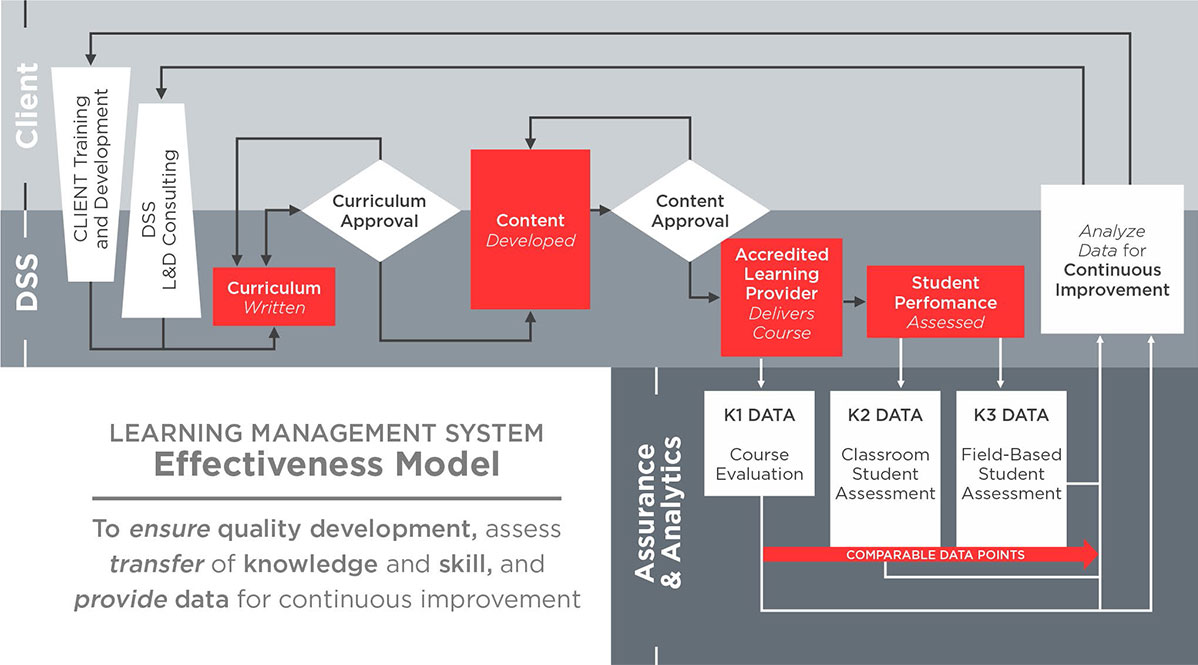The dss+ Capability Engine

Getting the most out of your training system
Using the Capability Engine for assessment and data collection
Learning and Development (L&D) activity is often challenged with proving its own value. L&D investments are often difficult to connect directly with operational outcomes. Even if these correlations are proven, they often take time to have measurable impact. This delay in correlative evidence creates a risk. If errors are made in the initial planning and execution of such programs, it could lead to a contaminated embedding of knowledge, skill and performance.
The Capability Engine is a system design that when fully integrated, provides immediate and in-real-time feedback about the learning systems and operational applications the learning system is meant to impact. Continuous assessment data from multiple sources provide actionable data that allows for early corrections in any L&D campaign.
Change: The Purpose of L&D
L&D looks to change performance, attitudes and the way people think. Often these changes aren’t visible, as we can’t measure a change in attitude or knowledge without first observing and assessing a task performance. Constructing, administrating, and deploying assessments is critical to measuring the effectiveness of any learning initiative.
At the same time, organizations investing in L&D initiatives seek a return on their investment (ROI), which may be measured in dollars, production or safety performance. It is important to ensure that investment in any learning activity can connect or support the organization’s desired ROI.
The Capability Engine: Putting It All Together
The Capability Engine works in three phases. The first phase is a three-step collaborative effort between SMEs and L&D professionals. This ensures a thorough examination of existing policies, procedures and content to eliminate the possibilities of missing a critical learning point, producing redundant material, or going against established processes.
It also ensures that only quality learning providers instructors produce or deliver content.
The second phase is about content delivery. Standards that ensure quality material, instructors and learning space are referenced and applied, the course is delivered, measured for perceived effectiveness and the transfer of knowledge and skill from instructor to participant is measured. Then, formal learning activities cease, and the evaluation begins.
The third phase collects data on the individuals’ performances in the field, measuring the acceptance of the activity to the work culture and what, if any variances of performance have taken place. The third phase also includes the collective analysis of data sets from all assessment phases, and begins to evaluate the effectiveness of the learning systems.

Putting It All Together: Analyzing for Continuous Improvement
The detailed approach of the Capability Engine, built on L&D best practices, produces consistently high quality, accurate and engaging content. Assurance tools for the selection of learning providers ensure that the high-quality content is transferred to the learner, while field assessments ensure that the practices are being used. The key to continuous improvement has always been in developing a system to collect, analyze, interpret and act upon performance deficiencies. The capability engine provides all the elements to ensure consistent performance of L&D activity, compare the activity with field performance and use analysis to identify and, target and correct problems. It is a tool that touches almost every facet of a corporation, and its reach is virtually comprehensive. This is the tool to ensure the ROI of L&D.
George Haber, Ph.D., is the Global Director for Instructional and Learning Systems at dss+.